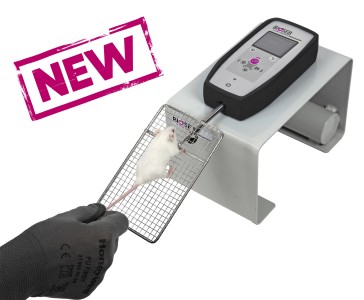Authors
K Sun, X Li, X Chen, Y Bai, G Zhou, ON Kokiko-Cochran, B Lamb, TA Hamilton, C-Y Lin, Y-S Lee, T Herjan
Lab
Cleveland Clinic, Lerner Research Institute, Cleveland, OH
Journal
The Journal of Immunology
Abstract
Human Ag R (HuR) is an RNA binding protein in the ELAVL protein family. To study the neuron-specific function of HuR, we generated inducible, neuron-specific HuR-deficient mice of both sexes. After tamoxifen-induced deletion of HuR, these mice developed a phenotype consisting of poor balance, decreased movement, and decreased strength. They performed significantly worse on the rotarod test compared with littermate control mice, indicating coordination deficiency. Using the grip-strength test, it was also determined that the forelimbs of neuron-specific HuR-deficient mice were much weaker than littermate control mice. Immunostaining of the brain and cervical spinal cord showed that HuR-deficient neurons had increased levels of cleaved caspase-3, a hallmark of cell apoptosis. Caspase-3 cleavage was especially strong in pyramidal neurons and _ motor neurons of HuR-deficient mice. Genome-wide microarray and real-time PCR analysis further indicated that HuR deficiency in neurons resulted in altered expression of genes in the brain involved in cell growth, including trichoplein keratin filament–binding protein, Cdkn2c, G-protein signaling modulator 2, immediate early response 2, superoxide dismutase 1, and Bcl2. The additional enriched Gene Ontology terms in the brain tissues of neuron-specific HuR-deficient mice were largely related to inflammation, including IFN-induced genes and complement components. Importantly, some of these HuR-regulated genes were also significantly altered in the brain and spinal cord of patients with amyotrophic lateral sclerosis. Additionally, neuronal HuR deficiency resulted in the redistribution of TDP43 to cytosolic granules, which has been linked to motor neuron disease. Taken together, we propose that this neuron-specific HuR-deficient mouse strain can potentially be used as a motor neuron disease model.
BIOSEB Instruments Used
Grip strength test (BIO-GS3)
Source :
http://www.jimmunol.org/content/early/2018/05/11/jimmunol.1701501

 Douleur - Allodynie/Hyperalgésie Thermique
Douleur - Allodynie/Hyperalgésie Thermique Douleur - Spontanée - Déficit de Posture
Douleur - Spontanée - Déficit de Posture Douleur - Allodynie/Hyperalgésie Mécanique
Douleur - Allodynie/Hyperalgésie Mécanique Apprentissage/Mémoire - Attention - Addiction
Apprentissage/Mémoire - Attention - Addiction Physiologie & Recherche Respiratoire
Physiologie & Recherche Respiratoire




































 Douleur
Douleur Système Nerveux Central (SNC)
Système Nerveux Central (SNC)  Neurodégénérescence
Neurodégénérescence Système sensoriel
Système sensoriel Système moteur
Système moteur Troubles de l'humeur
Troubles de l'humeur Autres pathologies
Autres pathologies Système musculaire
Système musculaire Articulations
Articulations Métabolisme
Métabolisme Thématiques transversales
Thématiques transversales Congrès & Meetings
Congrès & Meetings 